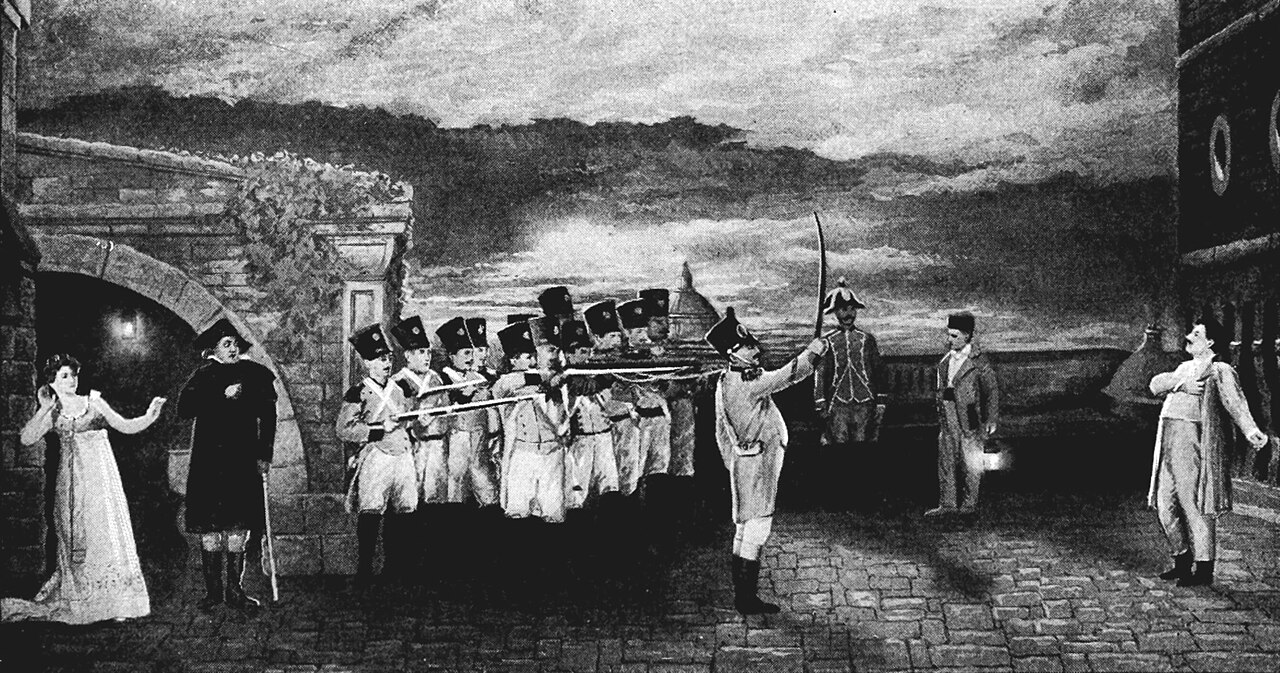
Europe in the mid-19th century witnessed numerous revolutions and upheavals. The Revolutions of 1848, with uprisings in France, Germany, Austria, Hungary, and Italy, demanded political reform and national self-determination. Although most of these revolutions failed initially, they highlighted growing tensions between conservative monarchies and bourgeoisie-led movements for nation states and sovereignty. The period also saw Polish uprisings against foreign rule and the first working-class movement within a bourgeois nation-state: the British Chartists, who pushed for democratic reforms. Conflicts like the Crimean War, alongside movements like the Italian Risorgimento, reshaped European politics, with Italy and Germany eventually achieving national unification in 1871. Rapid industrialization brought about a growing working-class movement, culminating in the Paris Commune of 1871.
Gramsci argued that the Risorgimento was dominated by an alliance of elites and the liberal bourgeoisie, who prevented it from becoming a truly popular revolution capable of transforming Italian society more profoundly. These elites unified Italy in a way that preserved the existing power structures, particularly the power of the landed aristocracy, transferring control from the old aristocracy to the liberal bourgeoisie without significant changes for the masses. The promises of national liberation felt hollow to the impoverished, especially in the largely agricultural southern Italy. Composers like Giuseppe Verdi directly supported the radical forces of the Risorgimento, including Garibaldi.
Verdi’s career coincided with the Risorgimento, and this was reflected in his musical innovations. Operas like Nabucco (1842) became symbols of Italian independence and resistance to foreign rule. The famous “Va, pensiero” chorus from Nabucco became an anthem for the Italian nationalist cause, which included opposition to Austrian occupation of Italian-speaking lands in the north. Verdi became a patriotic symbol, and his name was associated with the unification movement—“Viva VERDI” stood for “Viva Vittorio Emanuele Re D’Italia” (Long Live Victor Emmanuel, King of Italy), a rallying cry for unification. Verdi’s engagement with political and social issues, both in his operas and his personal life (he was a member of Italy’s first parliament after unification), placed him at the heart of the revolutionary changes transforming Italy.
Societal struggles in the late 19th century were paralleled by the rise of realism and naturalism in literature and art. Artists such as Émile Zola in the novel and Gustave Courbet on canvas turned to the lives of the working class in their realistic works. This new realism influenced verismo, a style that dominated Italian opera for a time, characterized by its focus on everyday situations with ordinary people, often with tragic outcomes. While Puccini is not strictly associated with verismo in the same way as composers like Pietro Mascagni, he absorbed some of its influence.

Born in 1858 in Lucca, Tuscany, during this time of upheaval, Puccini grew up amid rising nationalist sentiment and the effort to build a cohesive Italian identity, which found expression in the cultural and artistic landscape. Puccini’s family had a long tradition of serving as church musicians. They lived modestly, though not in poverty. Like much of Tuscany, Lucca was affected by economic difficulties in the aftermath of unification, shaping the world Puccini grew up in. When he moved to Milan in the 1880s to study at the Conservatory, he depended on scholarships and patrons. Milan, one of Italy’s most industrialized cities, had become a center of growing socialist and labor movements. While Puccini wasn’t directly involved in these movements, he was certainly aware of the growing social unrest which influenced the marginalized and exploited characters in his later operas.
Puccini distanced himself from politics, stating: “I love small things and the only music I can or will make is that of small things…so long as they are true and full of passion and humanity, and touch the heart.” Yet despite his political reticence, Puccini’s work reflects the society and historical moment in which he lived, particularly through the characters and stories he presents.
Forty-five years younger than Verdi, Puccini, by contrast, matured during a time when Italy was already unified. While Puccini’s works often touched on social and political themes (such as police state repression in Tosca), he was largely apolitical compared to Verdi. His focus was on intimate human dramas rather than broad political struggles. Set in diverse global locations and featuring characters from various classes and marginalized groups, Puccini’s operas subtly critique class society, power abuse, and the oppression of women.
Operas like La Bohème and Madame Butterfly reflect his critique of social conditions, particularly through their focus on the struggles of the oppressed, while Tosca explicitly addresses political themes. His realistic portrayals of personal and societal conflicts were emotionally powerful, underscoring his attention to human experience. The plight of women, the title characters of many of his operas, frequently takes center stage.
While Verdi’s revolutionary spirit reshaped both the form and content of opera, moving away from conventional structures and infusing it with drama, realism, and psychological complexity, especially in his later works, Puccini brought heightened emotional realism to the genre, not seeking to challenge or transform the art form so radically.

At the height of his fame, Puccini received lucrative offers from the United States, where he set and premiered The Girl of the Golden West, a Gold Rush Western opera. However, his time in the U.S. led to a creative crisis, as he struggled with the commercial pressures of the opera scene there. He only regained his artistic momentum after returning to Italy.
Puccini died in Brussels on November 29, 1924, before completing his final opera, Turandot. Most of the world’s leading opera companies have featured at least one of his operas during this season.
La Bohème (1896). Perhaps Puccini’s best-known work, and among the most-performed operas in the repertoire, La Bohème portrays the struggles of Parisian artists and the urban poor, living in the margins of society. The opera highlights the economic hardship and instability of precarious labor, as the “Bohemians” live hand-to-mouth, evading landlords and striving to maintain dignity in a society indifferent to their plight. It implicitly critiques a bourgeois society that ignores and marginalizes those who don’t fit into capitalist notions of productivity. Their lives tightly intertwined, the characters’ suffering exposes the brutal realities of class and power.
Madame Butterfly (1904). Puccini’s Madame Butterfly reflects on Western imperialism and its devastating impact on subjected peoples. Set in Japan, the opera tells the story of a 15-year-old Japanese woman, Cio-Cio-San, who is abandoned and betrayed by her U.S. lover, a visiting naval officer symbolizing the “opening” of Japan to Western trade and influence. Although the opera has been criticized for its Orientalist portrayal of Japan, it can also be seen as an indictment of the exploitative and dehumanizing nature of American global expansion. Butterfly’s tragic fate mirrors the experiences of countless colonized subjects who were manipulated and discarded by the imperial powers.
Turandot (1926). Puccini’s final, unfinished opera (the final scenes completed, in its most commonly performed version, by his fellow composer Franco Alfano) Turandot is set in a fantastical version of ancient China and is often viewed through the lens of exoticism. However, Turandot also can be read as a critique of autocratic power and the pulverizing effects of rigid, hierarchical systems. The cold, unfeeling princess Turandot, who sentences her suitors to death if they cannot solve her riddles, symbolizes brutal power structures that punish and subjugate.
Tosca (1900). Giacomo Puccini’s Tosca is his most dramatically intense and politically charged opera. Set against the backdrop of political turmoil and revolutionary movements in Italy, Tosca explores themes of resistance against tyranny and the cost of political oppression.
The opera takes place in Rome in June 1800, during the Napoleonic Wars and the conflict between republicanism and monarchical rule. At the time, Rome was under the control of reactionary forces loyal to the Austrian monarchy and the Papal States, while Napoleon’s army was advancing across Italy, spreading revolutionary ideals of liberty, equality, and fraternity.
The action unfolds over a single day, with each act set in an iconic Roman location: the church of Sant’Andrea della Valle, the Palazzo Farnese, and the Castel Sant’Angelo. The protagonist, Mario Cavaradossi, is a painter and a supporter of Napoleon and republican ideals. He helps the escaped political prisoner Cesare Angelotti, a former consul of the short-lived Roman Republic (1798-99), who is fleeing from Baron Scarpia, the ruthless chief of police and a symbol of state oppression. The conflict between the republican rebels (Cavaradossi and Angelotti) and the monarchical forces (Scarpia) in league with the Catholic Church mirrors the larger political struggle between revolutionary ideals and reactionary tyranny that shaped Italy’s political landscape during Puccini’s time.

Puccini composed the opera in 1898-99, premiering it on January 14, 1900, at the Teatro Costanzi in Rome, the city where the action takes place. Although Tosca adheres to the principles of Italian verismo, Puccini’s musical treatment surpasses that of Mascagni and Leoncavallo. His sophisticated use of leitmotifs, tense harmonies, and complex musical-dramatic scenes reveals Wagnerian influences, though expressed through Puccini’s unique Italian style. The orchestra plays a vital role, with vocal lines unfolding above it, seamlessly transitioning between recitative and aria.
Puccini’s music brilliantly reflects the opera’s political content, assigning each character a distinct musical language that mirrors their role in the socio-political conflict. Scarpia’s theme, built on dark, ominous intervals and descending chromatic lines, underscores his authoritarian nature, reinforced by heavy orchestration and brass instruments. Puccini’s use of church music, like the Te Deum at the end of Act I, sets the scene and critiques the political power of the Church as an instrument of repression, with Scarpia often singing his brutal intentions over sacred music.
Cavaradossi’s music, on the other hand, reflects his revolutionary spirit. His lyrical, expansive melodies, often soaring and heroic, align him with the ideals of liberty and freedom. His aria “Vittoria! Vittoria!” in act II, sung when he learns of Napoleon’s victory, is marked by triumphant orchestral fanfares, capturing the revolutionary hope for liberation.
Tosca’s character evolves from vulnerability to defiance. Her iconic aria “Vissi d’arte” in act II expresses her anguish and bewilderment, questioning why she must suffer despite her devotion to art and love. The simplicity and lyricism of her melody starkly contrast with the violent and oppressive world around her. When Tosca kills Scarpia later in the act (no plot spoiler as the story has been around for 125 years), the dissonant music accompanying the stabbing illustrates the breaking of tyranny, followed by softer orchestration, as Tosca arranges Scarpia’s body, signaling her temporary triumph over oppression.
In the final act, Puccini contrasts hope with the harsh reality of political oppression. Cavaradossi’s final aria, sung as he awaits execution, is a melancholic reflection on fading hopes of freedom. The descending melody, paired with the somber orchestration, underscores the personal cost of revolutionary struggle, creating an atmosphere of inevitable doom.
Tosca is a deeply political opera, embedded in the revolutionary context of its time. Through his masterful use of leitmotifs, orchestration, and the interplay of personal and political conflicts, Puccini transforms these revolutionary themes into music that resonates emotionally with audiences. The clash between tyranny and the ideals of liberation mirrors the broader political struggles of the Risorgimento and the revolutions that shaped modern Italy and Europe. Needless to say, echoes of these same struggles resound down to our own times.
We hope you appreciated this article. At People’s World, we believe news and information should be free and accessible to all, but we need your help. Our journalism is free of corporate influence and paywalls because we are totally reader-supported. Only you, our readers and supporters, make this possible. If you enjoy reading People’s World and the stories we bring you, please support our work by donating or becoming a monthly sustainer today. Thank you!










